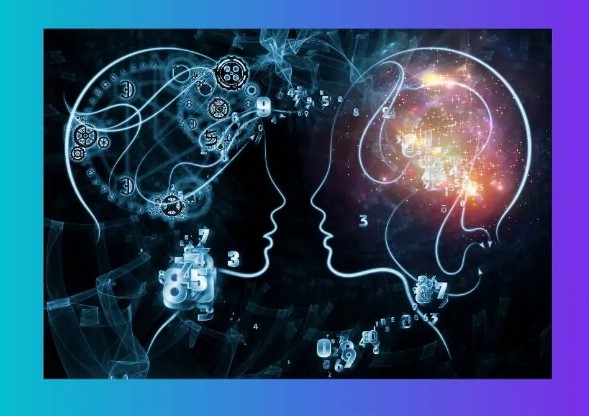The difference between delusion and illusion often gets blurred in everyday conversation, leading to confusion about their meanings and implications. Both terms relate to errors in perception, but they operate in distinctly different ways within the human mind. This distinction is not just academic; it has practical significance in fields ranging from psychology to law, influencing how behaviors and experiences are interpreted.
Delusions are firmly held beliefs in something that is not true or based on reality, often stemming from a mental health condition. In contrast, illusions are misinterpretations of external stimuli, where the mind deceives the senses, creating a distorted perception of reality. These definitions lay the groundwork for understanding how each phenomenon affects human experience and interaction with the world.
While delusions originate from within and are tied to the believer’s psyche, illusions are external, triggered by the environment and sensory input. This fundamental difference highlights the diverse mechanisms by which our minds can be misled. Exploring these phenomena sheds light on the complex interplay between mind, body, and reality, offering insights into human cognition and its vulnerabilities.

Delusion Defined
Definition and Characteristics
Delusions are strongly held beliefs in something that is not true or does not exist in reality. These beliefs persist despite clear evidence to the contrary. Delusions are significant because they reflect a breakdown in the ability to distinguish reality. Characteristics of delusions include:
- Persistence: They are held with strong conviction, even when faced with contradictory evidence.
- False belief: The belief is not aligned with reality.
- Impact on behavior: Delusions can significantly influence an individual’s behavior.
Causes and Examples
Delusions are often caused by mental health conditions such as schizophrenia, bipolar disorder, and severe depression with psychotic features. They can also stem from neurological conditions or brain injuries. Examples include:
- A person believing they are under constant surveillance (paranoia).
- An individual convinced they possess extraordinary talent or wealth (grandiosity).
Illusion Defined
Definition and Characteristics
Illusions are misinterpretations of sensory information. The mind deceives the senses, creating a perception that diverges from the actual stimulus. Illusions highlight the brain’s interpretation processes. Characteristics of illusions include:
- Sensory origin: Rooted in misleading sensory input.
- Misinterpretation: A false perception or misunderstanding of the real stimulus.
- Temporary: Often resolved when the sensory confusion is clarified.
Causes and Examples
Illusions are primarily caused by the environment or specific conditions that trick the sensory system. They can happen to anyone and do not typically indicate a mental health disorder. Examples include:
- Seeing water on a hot road due to heatwaves (mirage).
- Hearing a voice in the wind (auditory illusion).
Key Differences
Reality Basis
Delusions are based on internal beliefs with no grounding in reality, whereas illusions are misinterpretations of real external stimuli.
Psychological vs. Sensory Origins
Delusions stem from psychological or neurological issues, affecting the belief system. Illusions are caused by external sensory inputs misleading the perception.
Types of Delusions
Paranoid
Paranoid delusions involve the belief that one is being persecuted or harmed by others. This type includes:
- Belief of being followed.
- Fear of being poisoned.
Grandiose
Grandiose delusions are characterized by beliefs of possessing exceptional abilities, wealth, or importance. For example:
- Thinking one has a special relationship with a famous person.
- Believing one has invented a revolutionary product.
Somatic
Somatic delusions focus on the body, such as believing one has a serious disease despite medical evidence to the contrary.
Types of Illusions
Optical
Optical illusions involve misleading visual perceptions. Examples include:
- The Müller-Lyer illusion, where lines of the same length appear different.
- The Ames room illusion, where people seem to grow or shrink.
Auditory
Auditory illusions occur when sounds deceive. An example is the Shepard tone, a sound that seems to ascend or descend endlessly.
Tactile
Tactile illusions involve the sense of touch, like feeling phantom vibrations from a cell phone.
Causes and Triggers
Delusions
Mental Health Disorders
Conditions such as schizophrenia and bipolar disorder can predispose individuals to delusions.
Neurological Factors
Brain injuries or neurological diseases may disrupt the brain’s interpretation processes, leading to delusions.
Illusions
Environmental Factors
Situations that confuse the sensory system can create illusions, like the bending of a stick partially submerged in water.
Brain Response to Stimuli
The brain’s attempt to make sense of complex or insufficient sensory information can result in illusions.

Impact on Life
Delusions
Social and Personal Relationships
Delusions can have a profound impact on an individual’s social and personal relationships. The belief in something that is not true or based in reality can create barriers between the person experiencing the delusion and their loved ones. For instance, paranoid delusions can lead to mistrust and suspicion, isolating the individual from support networks. Grandiose delusions may result in unrealistic expectations and demands on relationships, leading to conflict and strain.
Treatment and Management
Managing delusions effectively requires a comprehensive approach, often involving:
- Medication: Antipsychotic drugs can help reduce the intensity of delusions.
- Psychotherapy: Cognitive-behavioral therapy (CBT) and other forms of psychotherapy can assist individuals in recognizing and questioning the validity of their delusions.
- Support Networks: Family and peer support groups can provide emotional support and understanding.
Illusions
Daily Perception and Interaction
Illusions typically have a less dramatic impact on daily life compared to delusions. They are a normal part of human perception, illustrating the brain’s attempts to interpret sensory data. However, understanding illusions can improve our awareness of the limitations and capabilities of our sensory systems, enhancing our interaction with the world.
Harmless vs. Harmful Effects
While most illusions are harmless and can be fascinating insights into the workings of the brain, some can have negative effects. For example, illusions that occur in specific conditions, like the misjudgment of distances while driving in fog, can lead to dangerous situations. Recognizing these potential dangers is crucial for mitigating risks associated with sensory misinterpretations.
Diagnosis and Treatment
Delusions
Psychological Assessment
Diagnosing delusions involves a thorough psychological assessment conducted by a mental health professional. This assessment includes interviews, mental status examinations, and sometimes, psychological testing to understand the beliefs’ content, intensity, and impact on functioning.
Treatment Approaches
The treatment for delusions typically involves a combination of:
- Medication: Particularly antipsychotics, to reduce symptoms.
- Psychotherapy: To help challenge delusional beliefs and improve reality testing.
- Social Support: Engaging family and community resources to support the individual.
Illusions
Distinguishing from Delusions
Distinguishing illusions from delusions is essential for accurate diagnosis and treatment. Illusions are generally identified through the understanding that they are distortions of real external stimuli, not deeply held false beliefs. This distinction is crucial in clinical settings to ensure appropriate intervention.
Significance in Mental Health
Understanding illusions and their role in daily perception offers valuable insights into mental health. It helps professionals recognize the boundary between normal sensory processing and when these experiences may indicate underlying psychological issues. Recognizing when illusions are a part of a broader pattern of sensory misinterpretation can aid in diagnosing conditions like schizophrenia, where delusions and hallucinations (a form of illusion) often co-occur.
FAQs
Can illusions lead to delusions?
While illusions themselves are not delusions, persistent exposure to or focus on certain illusions can contribute to the development of delusory thinking in susceptible individuals. This usually requires an underlying predisposition towards mental health conditions where the boundaries between reality and perception are already weakened.
Why are illusions more common?
Illusions are a common part of human experience because our senses are not infallible. They often occur due to the brain’s attempt to interpret complex or ambiguous sensory information. Unlike delusions, which typically require a mental health condition to develop, illusions can happen to anyone, reflecting the brain’s efforts to make sense of the world.
How do professionals distinguish them?
Professionals use a combination of patient interviews, psychological assessments, and sometimes neurological tests to distinguish between delusions and illusions. The key is to understand the origin of the experience—whether it stems from internal beliefs or external sensory input—and its impact on the individual’s perception of reality.
Conclusion
Understanding the distinction between delusion and illusion is more than an academic exercise; it’s a window into the complex workings of the human mind. These phenomena illustrate the delicate balance between reality and perception, a balance that, when disrupted, can significantly affect an individual’s ability to navigate the world. Recognizing and appreciating the differences between them not only enhances our comprehension of mental health but also fosters empathy towards those who experience these realities differently.
In sum, the exploration of delusions and illusions offers valuable insights into the nature of human cognition, the vulnerabilities of perception, and the thin line between what is real and what is perceived. As we unravel these complexities, we gain a deeper understanding of the mind’s power and its potential for error, a fundamental aspect of the human condition.
